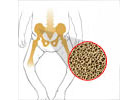Iron oxide nanoparticles are found to be effective for tracking of transplanted human endothelial cells, states study.

"A good MRI contrast agent must possess a number of features," said study co-author Dr. Wen-Li Chen, at South China Normal University's MOE Key Laboratory of Laser Life Science. "Those features are: low toxicity and good stabilization, high sensitivity, good solubility and the ability to remain in the target cell for a long time. In our study, we found that INOPS are sensitive and can perturb the static magnetic field and provide a string change in MR signals."
The researchers found that the INOPS could be taken up by the cell rather than adhering to the exterior of the cell membrane. However, they also found that a proportional relationship might exist between the number of labeled cells and signal intensity.
"For the first time, we identified that autophagy death could take place at high INOPS loading concentrations," said the researchers.
They also discovered that an increased incubation time, from 24 to 48 hours, did not increase cellular uptake of INOPS and that the percentage of labeled cells declined after 24 hours to be significantly lower by 48 hours.
"It is possible that when the intracellular iron becomes saturated, the particles may start to be expelled out of cells," they concluded. "Thus, the determination of optimal loading concentration is an important step in maintaining the quality of cell labeling and cell activity."
 MEDINDIA
MEDINDIA




 Email
Email







